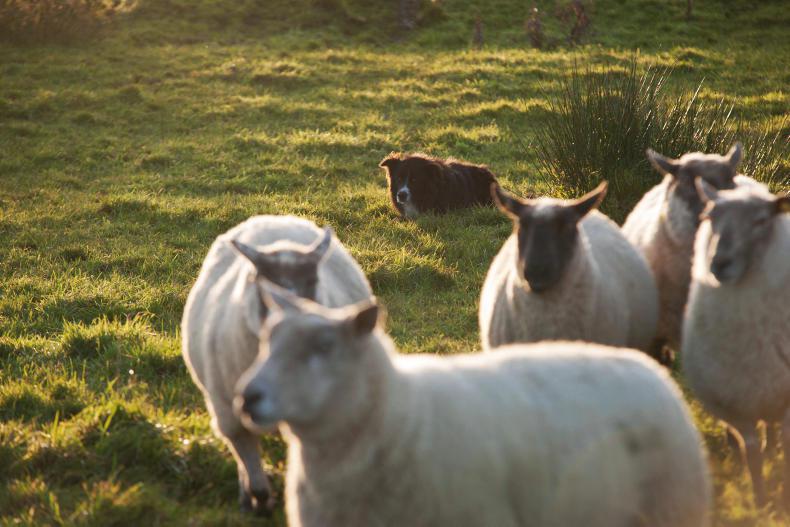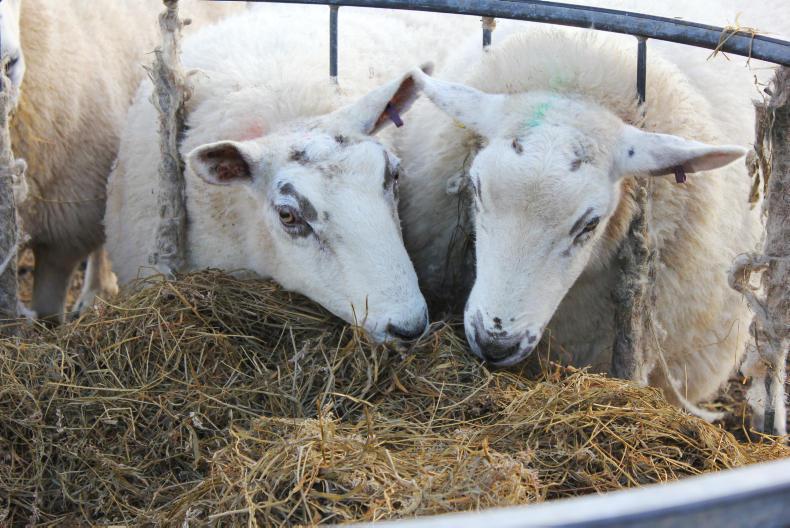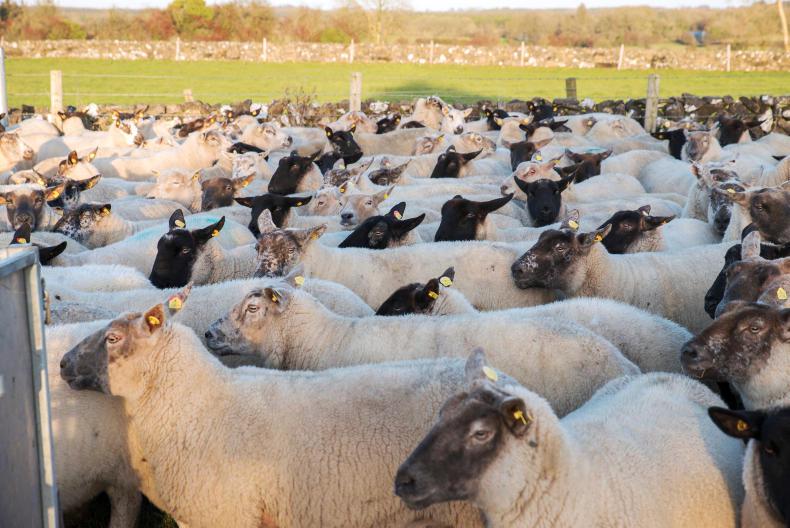The Farm Profit Programme focus farms are keeping a close eye on ewe body condition as they approach the last few weeks of pregnancy.
Sheep scanning is in full swing across the country. Speaking to a number of scanners, litter size is running at average to slightly above average across the board.
Efforts on sheep farms now need to be concentrated on turning as much of that scanning result into live lambs on the ground in the coming months.
Management of the pregnant ewe in the final weeks of pregnancy will have a massive impact on this.
Body condition
Many of the farmers and scanners spoken to have commented on the excellent body condition that ewes are in at the point of scanning this year.

This is primarily due to the mild winter conditions experienced up until now. In fact, grass has been actively growing for a lot of winter on many farms.
This increased body condition is the main driver behind the above-average scanning rates.
Good nutrition in early pregnancy, leading to a maintained or increase in body condition, will minimise embryo loss.
However, the hard work for the pregnant ewe is only beginning. In the final seven weeks of pregnancy, up to 70% of foetal growth occurs.
At the same time, udder development and colostrum production occurs in the final couple of weeks pre-lambing.
This leads to an almost doubling of the ewes’ daily energy intake needs in the last weeks of pregnancy – all at a time when the actual space for feed in the stomach of the ewe is reducing due to the increasing size of the unborn lamb. 
As a result, ewes will mobilise some of their own body reserves in late pregnancy to try and meet this nutritional demand.
While this is a natural thing to occur, we want to manage that body condition mobilisation carefully so that ewes do not lose excess condition pre-lambing as it will affect her ability to lamb and her milk yield in early lactation.
Batching ewes
When scanning is complete, it is a good idea to batch ewes together based on both litter size and body condition.
Where there are thin ewes scanned with a single lamb, they should be grouped with twin-bearing ewes
Ewes in good condition scanned with a single lamb will require little or no supplementation pre-lambing provided forage quality is sufficient.
Where there are thin ewes scanned with a single lamb, they should be grouped with twin-bearing ewes and have access to better-quality forage or have concentrate supplementation introduced at an earlier date where required.
Going through ewes again in two to three weeks’ time and regrouping any ewes that have had a serious change in body condition will be a worthwhile exercise.
Supplementation
Where ewes are being offered grass silage, knowing the feed value is critically important. Table 1 outlines the concentrate feed requirement for twin-bearing ewes offered varying quality silages.
What becomes quite apparent is the rapid increase in concentrate requirements for poorer quality forages.

Having top-quality silage available for ewes pre-lambing can save 25kg/hd or 2.5t for every 100 ewes. This can lead to a significant cost saving over a large number of ewes.
Where ewes are grazing decent-quality grass pre-lambing concentrate supplementation should be in line with moderate quality silage recommendations.
However, it should be noted that in periods of wet weather the dry matter of the grass will be lowered and ewes will struggle to meet intake requirements.
Trough space
Where supplementation is being offered in feed troughs, having sufficient head space for all ewes to feed at one time is very important.
At least 500mm per head is recommended for medium-sized ewes (75kg), while this increases to 600mm per head for large ewes up to 90kg liveweight.
It is important to transition ewes to a grass or conserved forage-based diet at least three weeks pre-lambing
Where pregnant ewes are being wintered on some form of winter crop – be it kale, turnips or fodder beet, it is important to transition ewes to a grass or conserved forage-based diet at least three weeks pre-lambing.
While forage crops offer a cheap and cost-effective winter feed for ewes, these crops are typically very low in dry matter and therefore intakes in late pregnancy are not sufficient to meet ewe energy demands.
Prolapse
Remaining on these diets close to lambing can increase the instances of prolapse.
Two of the focus farms have scanned at this stage. A full breakdown of the scanning results will be reported in the coming weeks once the later lambing flocks have scanned.






 This is a subscriber-only article
This is a subscriber-only article











SHARING OPTIONS: